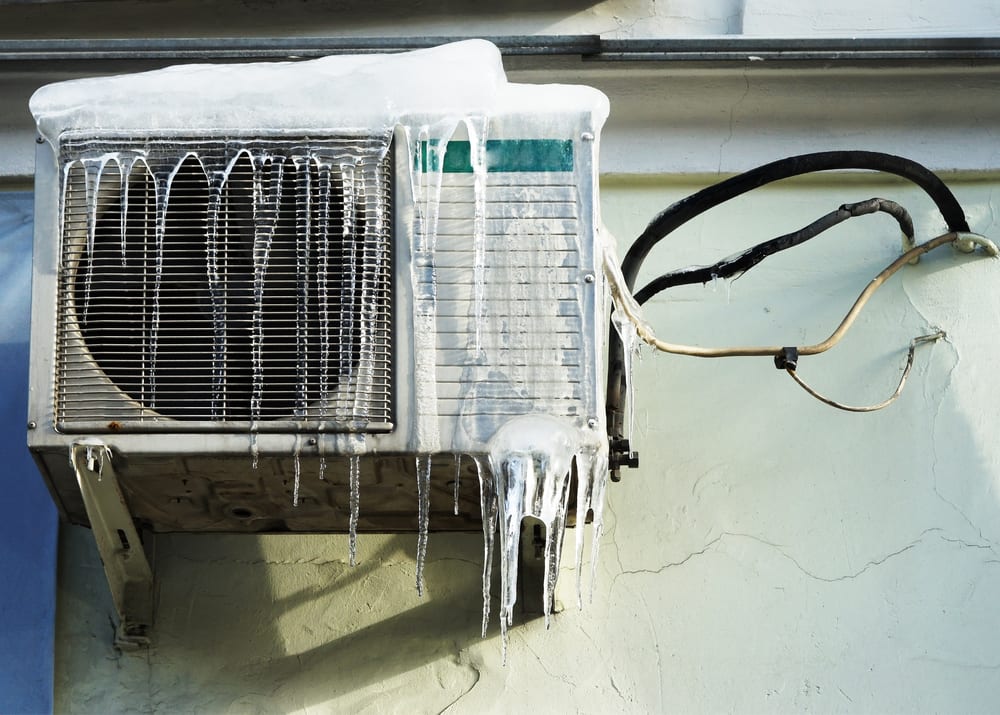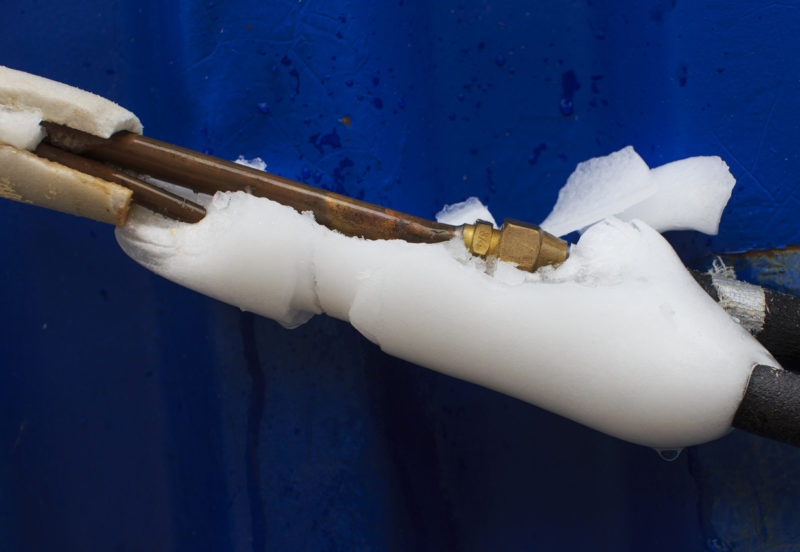What to Deal With a Frozen AC Pipe - Essential Steps for Recovery
What to Deal With a Frozen AC Pipe - Essential Steps for Recovery
Blog Article
We've encountered this article pertaining to Have a Frozen AC Line? Here’s How to Fix It listed below on the net and decided it made sense to talk about it with you in this article.

Intro
Discovering that your air conditioner pipeline is frozen can be concerning, specifically throughout hot summer season when you depend on your a/c the most. Recognizing what to do in such a circumstance is crucial to stop further damages to your cooling system and guarantee your comfort inside.
Comprehending the Causes
Numerous factors can contribute to the freezing of an air conditioner pipeline. Understanding these causes can assist you resolve the issue properly.
Lack of Airflow
One typical root cause of a frozen air conditioner pipeline is inadequate airflow. When the air flow over the evaporator coil is limited, it can create the coil to drop below freezing temperature level, resulting in ice development on the pipeline.
Low Refrigerant Levels
Insufficient cooling agent levels in your AC system can additionally lead to a frozen pipe. Low cooling agent levels can cause the stress in the system to drop, causing the freezing of dampness on the evaporator coil.
Cold Weather Conditions
In colder environments, freezing temperature levels outside can contribute to the cold of a/c pipelines. If your a/c system is not properly insulated or if there are leakages in the ductwork, cold air can infiltrate the system, causing the pipe to ice up.
Dirty Air Filters
Dirty or stopped up air filters can restrict air movement in your AC system, causing different concerns, including an icy pipe. It's important to replace or cleanse your air filterings system regularly to ensure appropriate air flow and prevent ice buildup.
Signs of a Frozen A/c Pipe
Identifying the indicators of a frozen air conditioning pipe is important for prompt action.
Minimized Airflow
If you notice a considerable reduction in air movement from your vents, it might suggest a frozen pipeline.
Ice Buildup on the Pipe
Noticeable ice buildup on the refrigerant line or the evaporator coil is a clear sign of an icy air conditioner pipe.
Odd Sounds from the Unit
Uncommon sounds, such as hissing or gurgling, originating from your a/c device can signal that there's ice existing on the pipeline.
Immediate Actions to Take
When faced with a frozen AC pipe, it's important to act swiftly to avoid more damages to your cooling system.
Shutting off the air conditioner
The very first step is to switch off your ac system to avoid the system from running and intensifying the issue.
Looking for Blockages
Check the location around the indoor device for any kind of blockages that might be obstructing air movement, such as furniture or drapes.
Thawing the Pipe
You can make use of gentle techniques like positioning towels soaked in warm water around the icy pipeline to help thaw it slowly.
Safety nets
Taking preventive measures can help avoid future incidents of an icy air conditioning pipe.
Regular Maintenance Checks
Set up routine upkeep talk to a professional HVAC specialist to make sure that your air conditioner system is running effectively.
Transforming Air Filters
Consistently replace or cleanse your air filters to avoid air flow limitations and preserve optimum performance.
Shielding Exposed Pipes
If your AC pipes are subjected to chilly temperatures, take into consideration shielding them to avoid cold throughout winter season.
Seeking Professional Help
If DIY approaches fail to deal with the problem or if you're not sure regarding how to continue, it's ideal to look for help from a qualified HVAC technician.
When DIY Methods Fail
If your efforts to thaw the pipeline or address other issues are not successful, it's time to call in a professional.
Importance of Hiring a Professional HVAC Technician
A qualified HVAC professional has the proficiency and devices necessary to diagnose and fix problems with your a/c system safely and efficiently.
Final thought
Taking care of a frozen air conditioner pipeline can be an aggravating experience, but recognizing how to react can assist decrease damage and bring back comfort to your home. By understanding the causes, identifying the indicators, and taking timely activity, you can properly attend to the issue and prevent future incidents.
What to Do If Your AC Line Is Frozen
Make Sure All Supply and Return Air Vents Are Open
If you notice problems with airflow, the first thing you should do is check your supply and return vents. Supply vents distribute clean, conditioned air throughout your home. As this air becomes stale, it’s pulled into the return vent, where it’s reconditioned before being sent back out through the supply vent.
When these vents are closed, air won’t flow in the home. Before examining your AC, check the vents in every room and ensure they’re all open.
Check for a Dirty Air Filter
Another possible cause of limited airflow is a dirty air filter. Your air conditioner’s filters catch elements you don’t want to breathe in, such as dirt and dust. Over time, filters can become clogged, ultimately blocking air from flowing in and out. The lack of airflow can then cause the entire coil to freeze and will completely restrict any air from moving through it. The AC may need to be powered off for one to two days to allow the coil to thaw after replacing the filter to allow proper functioning of the unit. This debris can also accumulate on your AC’s evaporator coil, requiring a more serious repair. In general, air filters should be cleaned regularly (about every two weeks).
Assess Your Outdoor Unit
In addition to checking your AC, assessing the outdoor unit is a good idea. Also known as the condensing unit, it works with your interior unit to release heat outside. An issue with the outdoor unit can result in rising internal temperatures.
Overgrown Shrubs or Clogged Leaves
From leaves and twigs to shrubs and debris, there’s no shortage of outdoor elements that can accumulate around your condensing unit. When these elements get lodged inside the unit, they can block airflow. Fortunately, removing the blockage can solve the problem.
Sounds of a Broken Fan
Shrubs and leaves aren’t the only things that can impede your outdoor unit’s airflow. If the fan is broken, the unit won’t be able to properly get rid of heat — which means the internal temperature won’t go down. First, make sure the fan is spinning. If it is, check for the following sounds of a broken fan:
Buzzing Rattling Screeching Hissing Clicking Preventative Measures
Nobody wants to deal with a frozen AC line. In addition to causing problems with your air conditioner, they require professional repairs. On the bright side, there are preventative measures you can take to help ensure this issue doesn’t arise in the first place.
https://www.coopergreenteam.com/blog/what-to-do-if-ac-line-frozen

As a fervent reader on Air Conditioner Frozen? How To Fix your Frozen AC Line, I was thinking sharing that excerpt was beneficial. Sharing is caring. Helping others is fun. We appreciate reading our article about Have a Frozen AC Line? Here’s How to Fix It.
Schedule Your Service Report this page